Basic Puerto Rican History
Introduction
The history of a country...
is generally written by the conquerors. The "conquered"
seldom writes anything. Many things contribute to the
correct and accurate depiction of historical data.
Sponsorship by the wealthy was one of the favorite
incentives. Such history tends to carry a partial or
one-sided view of the facts.
It is, consequently, up to the passionate historian to do
adecuate research to verify the facts... starting with the
simple fact that Puerto Rico is the oldest colony in the
world today!
Note: As you can see, this page
is just a historical primer, not a comprehensive study of
the History of Puerto Rico
Taíno

Puerto Rico’s native Taíno population, a hunter-gatherer
Arawak ancestry, settled the island more than 1,000 years
before the Spanish arrived—called it Borinquén or Borikén
("the great land of the valiant and noble Lord"), and called
themselves as Boricuas. By the time Columbus came, there
were about 45,00 Tainos in the whole 100x35 mile island
They lived in small villages led by a cacique Agüeybaná and
lived on hunting, fishing and gathering of indigenous
cassava root, vegetables and fruit.
By the The mid 1500s, Taíno domination of the island was
almost gone, and the Spanish arrival marked the beginning of
their extinction, yet their culture remains part of that of
contemporary Puerto Rico. Musical instruments such as
maracas and güiro, the hammock, and words such as Mayagüez,
Arecibo, iguana, Caguas and huracán (hurricane) are examples
of the legacy left by them. By the end of the 1500 most of
the Taino native population had been killed by disease,
violence, and suicide.
African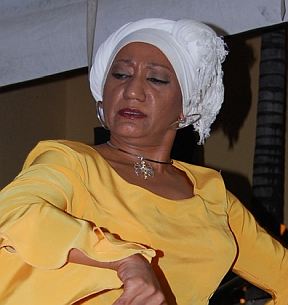
As part of the colonization process and because the Taínos
were mostly gone, African slaves were brought to the island.
The number of slaves on the island was small in comparison
to those in neighboring islands, like Hispaniola
(Haiti-Dominican Republic).
Also, early in the colonization,
attempts were made to take control of Puerto Rico from
Spain, by the fierce Caribs, a raiding tribe of the
Caribbean. They attacked the Island but were easily beat by
the superior Spanish firepower.
When the gold mines in Puerto Rico were empty, the Island
was no longer important to the Spanish Crown. The Spaniards
encouraged free people of color from British and French
possessions in the Caribbean to emigrate to Puerto Rico, to
provide a population base to support the Puerto Rican
garrison.
Throughout the years, there were many slave revolts in the
island. Slaves who were promised their freedom joined the
1868 uprising against Spanish colonial rule in what is known
as the Grito de Lares. On March 22, 1873, slavery was
abolished in Puerto Rico. The contributions of ethnic
Africans to the music, art, language, and heritage have been
instrumental in Puerto Rican culture.
2. Spaniard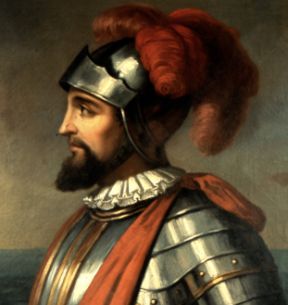
Christopher Columbus landed at Puerto Rico in 1493 and
claimed the island for Spain during this second voyage.
The European powers, French, Dutch, and British... quickly
realized the potential of the newly discovered lands and
attempted to gain control of them, but the Spanish
prevailed. In the Spanish Empire, Puerto Rico played a
secondary, but strategic role when compared to bigger
colonies like Peru and the mainland parts of New Spain.
Spain was determined to break the Taínos and after the
remarkably blatant and cruel abuse the Spanish Crown used to keep Boricuas "in
line", anything was welcome. One Lieutenant General Juan de
la Pezuela y Cevallos had terrorized the island's
population to the point of sheer desperation.
Have in mind that the Spanish ruled the Island despotically
and with an iron fist, to put it mildly. Just eleven years earlier,
in what history calls "The Terrible Year of 1887", one
Spanish governor, Romualdo Palacio was so mean that he instituted a
series of "compontes" or tortures to those who boycotted Spain's
monopoly on merchant goods. Some of these included hanging men by
their genitals (ouch!) and drowning their heads in "letrinas" (outhouses).
4. USA Invasion and Formative Years
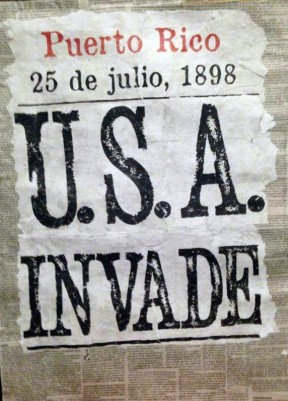 On July 25, 1898, during the Spanish–American War, the U.S.
invaded Puerto Rico with a landing at Guánica, a southern
town. As an outcome of the war, Spain ceded Puerto Rico to
the U.S. under the Treaty of Paris, which went into effect
on April 11, 1899. The treaty took effect on April 11, 1899
On July 25, 1898, during the Spanish–American War, the U.S.
invaded Puerto Rico with a landing at Guánica, a southern
town. As an outcome of the war, Spain ceded Puerto Rico to
the U.S. under the Treaty of Paris, which went into effect
on April 11, 1899. The treaty took effect on April 11, 1899
The United States and Puerto Rico began a long-standing
metropolis-colony relationship. In the early 1900, Puerto
Rico was ruled by the military, with officials including the
governor appointed by the President of the United States.
The Foraker Act of 1900 gave Puerto Rico a certain amount of
civilian popular government, including a popularly elected
House of Representatives. The upper house and governor were
appointed by the United States. During an address to the
Puerto Rican legislature in 1906, President Theodore
Roosevelt recommended that Puerto Ricans become U.S.
citizens.
In 1917, the U.S. Congress passed the Jones–Shafroth Act,
popularly called the Jones Act, which granted Puerto Ricans,
born on or after, April 25, 1898, U.S. citizenship. In 1914,
the Puerto Rican House of Delegates voted unanimously in
favor of independence from the United States, but this was
rejected by the U.S. Congress as "unconstitutional", and in
violation of the 1900 Foraker Act.
In 1937, Albizu Campos' party organized a protest in which
numerous people were killed by police in Ponce. The Insular
Police, resembling the National Guard, opened fire upon
unarmed cadets and bystanders.
Nineteen people were killed and over 200 were badly wounded,
many in their backs while running away. The Hays Commission
declared it a massacre and police mob action, and it has
since been known as the Ponce massacre.
6. Autonomy
During the latter years of the Roosevelt–Truman
administrations, the internal governance was changed in a
compromise reached with Luis Muñoz Marín and other Puerto
Rican leaders. In 1946, President Truman appointed the first
Puerto Rican-born governor, Jesús T. Piñero.
In 1947, the U.S. granted Puerto Ricans the right to
democratically elect their own governor. In 1948, Luis Muñoz
Marín became the first popularly elected governor of Puerto
Rico.
On February 4, 1952, the convention approved Resolution 22
which chose in English the word Commonwealth, meaning a
"politically organized community" or "state", which is
simultaneously connected by a compact or treaty to another
political system. Puerto Rico officially designates itself
with the term "Commonwealth of Puerto Rico" in its
constitution, as a translation into English of the term to
"Estado Libre Asociado" (ELA).
The Constitution of Puerto Rico was formally adopted on July
3, 1952 and modified and
ratified by the U.S. Congress, approved by President Truman
on July 3 of that year, and proclaimed by Gov. Muñoz Marín
on July 25, 1952. This was the anniversary of July 25, 1898,
landing of U.S. troops in the Puerto Rican Campaign of the
Spanish–American War, until then celebrated as an annual
Puerto Rico holiday.
Today
The people of Puerto Rico made history by requesting, for
the first time ever, the conclusion of the island's current
territorial status and be considered as a state of the USA
by popular vote. The US Congress has denied this petition.
On December 11, 2012, the Legislative Assembly of Puerto
Rico enacted a concurrent resolution requesting the
President and the Congress of the United States to respond
to the referendum of the people of Puerto Rico, held on
November 6, 2012, to end its current form of territorial
status and to begin the process to admit Puerto Rico as a
State. The initiative has not made Puerto Rico into a state.
Constitutionally, Puerto Rico is subject to the plenary
powers of the United States Congress under the territorial
clause of Article IV of the U.S. Constitution. They say
"jump" we say "how high?". Laws enacted at the federal level
in the United States apply to Puerto Rico as well,
regardless of its political status. Their residents do not
have voting representation in the U.S. Congress nor
Presidential vote.
Like the different states of the United States, Puerto Rico
lacks "the full sovereignty of an independent nation", for
example, the power to manage its "external relations with
other nations", which is held by the U.S. federal
government. The Supreme Court of the United States has
indicated that once the U.S. Constitution has been extended
to an area (by Congress or the courts), its coverage is
irrevocable. To hold that the political branches may switch
the Constitution on or off at will would lead to a regime in
which they, not this Court, say "what the law is".
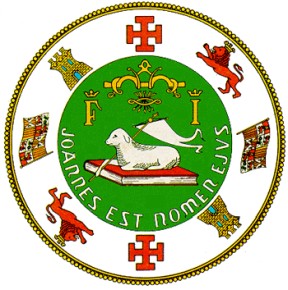
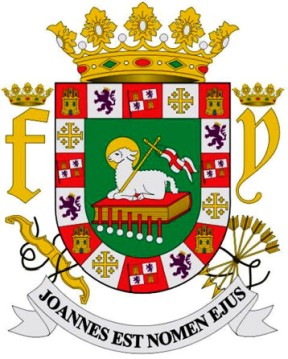
The Official seal and the Coat of Arms
HIGHLIGHTS
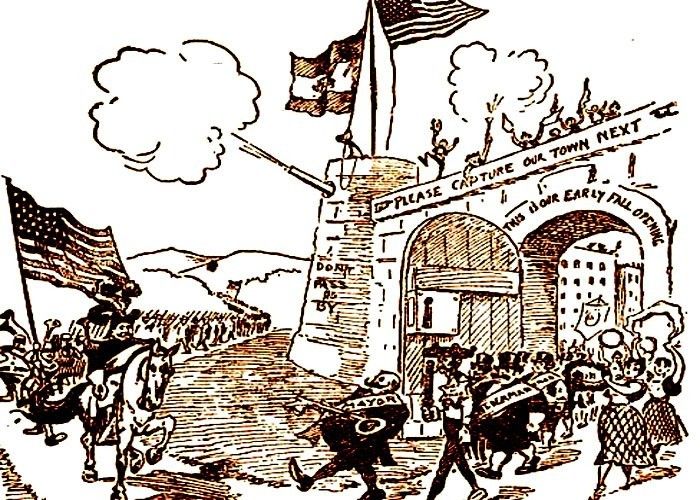
This political cartoon, published in 1898, shows a cynical
but not inaccurate view of how Puerto Ricans received the "invader" USA. The great Puerto Rican historian Francisco Scarano, comments on how joyous was the reception by the many
local communities... "with cordial enthusiasm that verged into
carnival-like happiness... what the mayor of Yauco called 'a
miracle intervention by the God of the just'."
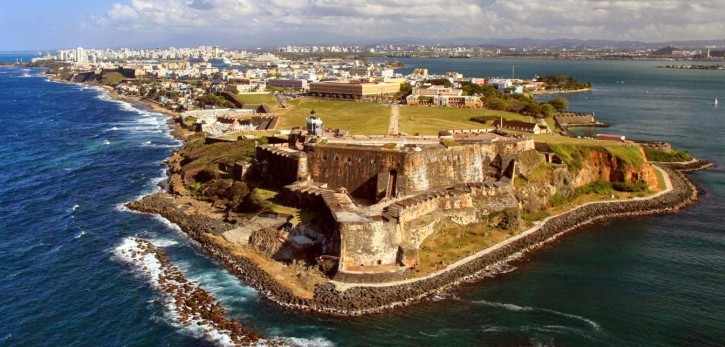
Castillo San Felipe del Morro also known as Fuerte San
Felipe del Morro or Castillo del Morro, is a 16th-century
citadel located in San Juan. Built between 1539-1587

The Spanish conquistadores treated the native Taino people
in
Puerto Rico with extreme cruelty, and the Indians were
virtually extinct by the mid-1500s.
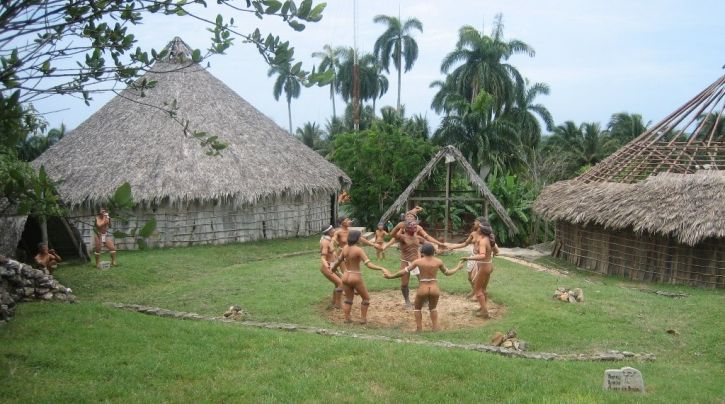
The Taíno people were one of the largest of the indigenous
peoples of the Caribbean. At the time of European contact in
the late 15th century, they were the principal inhabitants
of most of Cuba, Trinidad, Jamaica, Hispaniola (Haiti and
the Dominican Republic), and Puerto Rico.
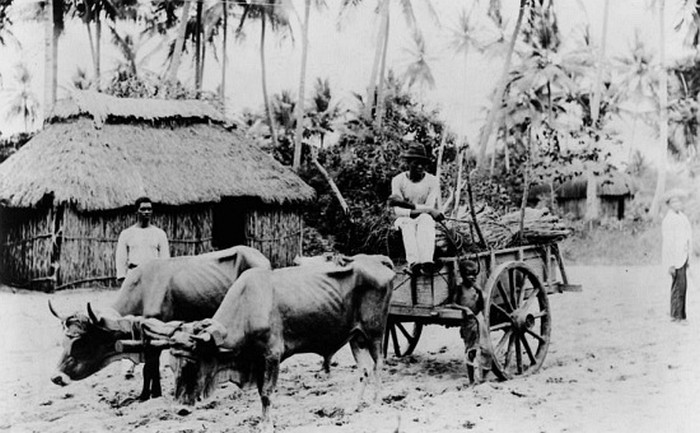
The cart pulled by two oxen was a common sight in 1903.
Poverty was so rampant that everybody is virtually skinny,
even the poor oxen, yet they did their work. Spain had left
5 years earlier and had taken everything... even the kitchen
sink. Notice the ubiquitous straw hut in the background.
That was affordable housing. ¡AY, BENDITO!
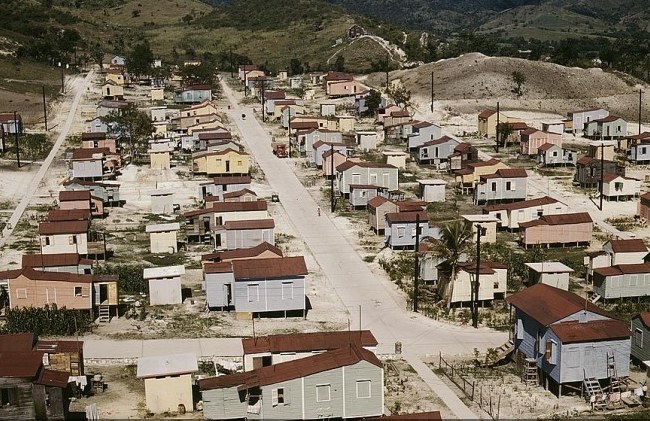
Caserio en Ponce 1942
The first housing projects were not concrete apartments as
became in the 1950s and 60s, but individual houses with
their own outhouses (letrinas)

On that date in 1898, U.S. troops invaded Puerto Rico,
beginning a period of U.S. colonial domination on the island
that continues to this day. The United States invaded Puerto
Rico, along with the Philippines, Guam and Cuba, in the
setting of the Spanish-American War.

donjibaro@gmail.com
This is the bottom line

“Live in such a way that no one blames the rest of us
nor finds fault with our work.” —(2 Corinthians 6:3)

Jibaros.Com®,
Jibaros.Net® - ALL content is Copyright © by Orlando Vázquez,
owner-designer and com does not accept any responsibility for the
privacy policy of third party sites